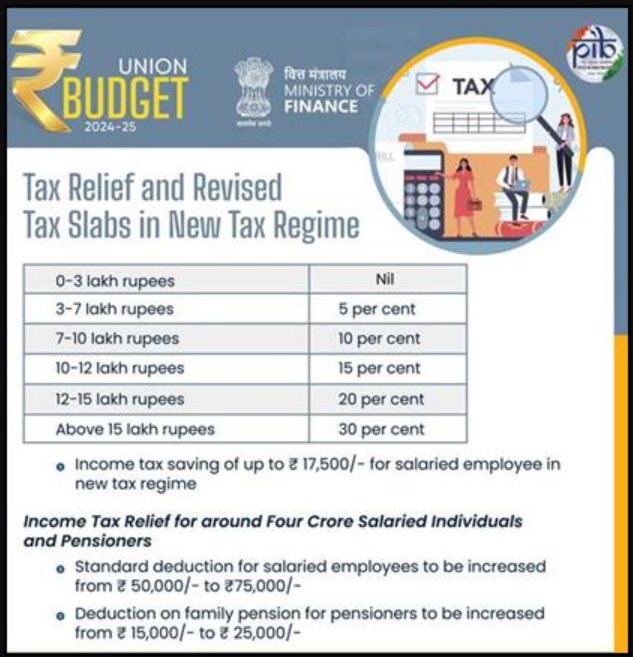3 August 2024 : Daily Current Affairs
1. Government Approves Rs 50,655 Crore for 936 km High-Speed Corridors, Revives PPP Model
- 1. Government Approves Rs 50,655 Crore for 936 km High-Speed Corridors, Revives PPP Model
- 2. NGT Report Clears Great Nicobar Port Project for ICRZ-IB Zone Amid Ongoing Legal Challenges
- 3. STEPS TO STRENGTHEN COUNTRY’S POSITION IN GLOBAL STEEL MARKET
- 4. 72% of personal income-tax payers opted for new tax regime in 2023-24
- 5. Centre reissues draft notification on ecosensitive areas in Western Ghats
- PRELIMS FACTS
- 1. Controversy Erupts as Italian Boxer Withdraws from Olympic Match Against Algerian Opponent
- 2. India selects 2 crew members for Axiom-4 mission to ISS
- 3. Mission Vatsalya scheme deliver services for Children in Need of Care and Protection and Children in Conflict with Law
(Source: Indian Express; Section: Cover page; Page: 01)
| Topic: GS3 – Indian Economy – Infrastructure: Energy, Ports, Roads, Airports, Railway etc. |
| Context: |
|
Analysis of News:
Build-Operate-Transfer (BOT) Model
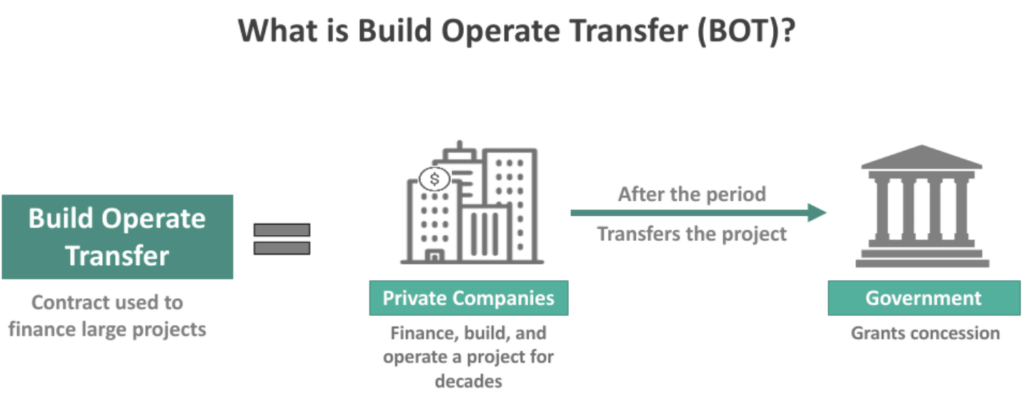
- Four of the eight highways will be executed under the Build-Operate-Transfer (BOT) model, marking a return to Public-Private Partnership (PPP) projects.
- Under the BOT model, the private sector assumes investment risk, builds the project, and maintains it for a specified period, recovering costs through toll collection.
Ministry of Road Transport and Highways Amendments
- In March 2024, the Ministry of Road Transport and Highways amended the Model Concession Agreement for BOT projects, making it more attractive to private players by offering liberal compensation, extended concession periods, and termination payments.
- A new concept called ‘construction support’ allows the National Highways Authority of India (NHAI) to pay up to 40% of the total project cost in 10 instalments linked to construction progress.
Specific BOT Projects
The four BOT projects include, three HAM projects, and lone EPC project
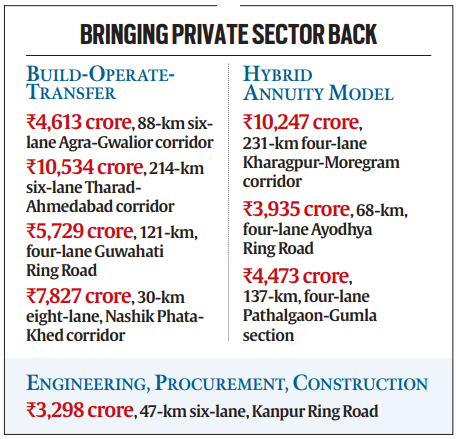
Hybrid Annuity Model (HAM) and EPC Projects
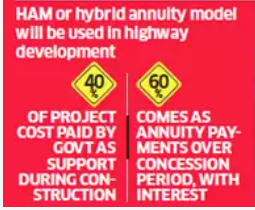
- The remaining four highways include three Hybrid Annuity Model (HAM) projects and one Engineering, Procurement, and Construction (EPC) project.
- Under HAM, the private player limits its risk while NHAI pays up to 40% of the project cost, and the private company maintains the road during the concession period.
- The EPC project involves the government paying the company for road construction, with the government owning and maintaining the road and collecting tolls.
Project Benefits
- According to the government, the Agra-Gwalior corridor will reduce distance by 7% and halve travel time.
- The Kharagpur-Moregram highway will reduce freight travel time from 9-10 hours to 3-5 hours, boosting the economy of West Bengal and the North East.
- The Tharad-Ahmedabad highway is expected to improve logistics efficiency by about 60%.
| PYQ: Investment in infrastructure is essential for a more rapid and inclusive economic growth. Discuss in the light of India’s experience. (250 words/15m) (UPSC CSE (M) GS-3 2021) |
| Practice Question: Evaluate the recent approval of eight national high-speed corridor projects by the Union government, focusing on the revival of the Build-Operate-Transfer (BOT) model. Discuss the expected economic impact and employment generation, and analyze the challenges and opportunities associated with the Public-Private Partnership (PPP) approach in large infrastructure projects. (250 words/15 m) |
2. NGT Report Clears Great Nicobar Port Project for ICRZ-IB Zone Amid Ongoing Legal Challenges
(Source: Indian Express; Section: Explained; Page: 17)
| Topic: GS2 – Governance GS3 – Environment |
| Context: |
|
Analysis of News:
About Great Nicobar Island
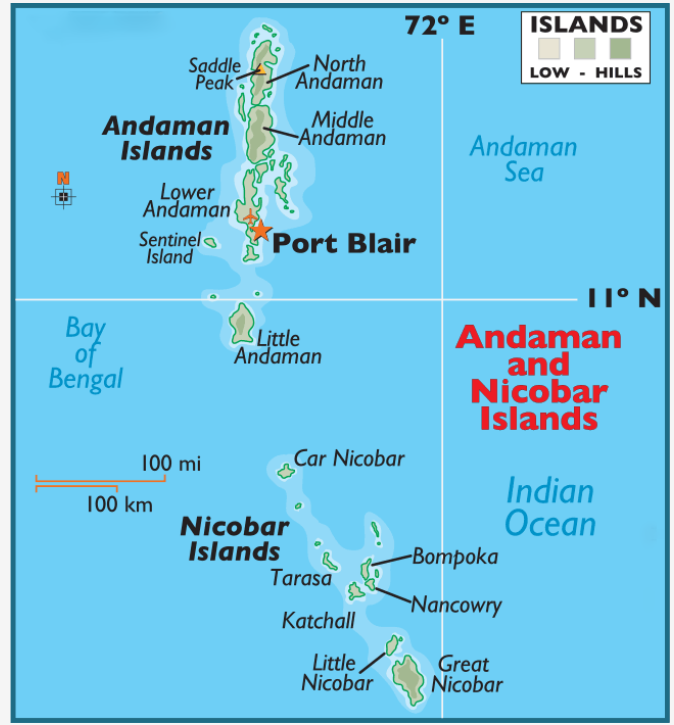
- Great Nicobar is the southernmost and largest of the Nicobar Islands, a sparsely inhabited 910-sq-km patch of mainly tropical rainforest in southeastern Bay of Bengal.
- Indira Point on the island, India’s southernmost point, is located 90 nautical miles (<170 km) from Sabang at the northern tip of Sumatra, the largest island of the Indonesian archipelago.
- The Andaman and Nicobar Islands consist of 836 islands, divided into two groups known as the Andaman Islands located in the north and the Nicobar Islands situated in the south, separated by the 10° Channel which is 150 kilometres wide.
- Great Nicobar has two national parks, a biosphere reserve, small populations of the Shompen, Onge, Andamanese and Nicobarese tribal peoples, and a few thousand non-tribal settlers.
What is the Great Nicobar Island Project?
- The Great Nicobar Island (GNI) project, launched in 2021, is a mega project to be implemented at the southern end of the Andaman and Nicobar islands.
- It involves developing a trans-shipment port, an international airport, township development, and a 450 MVA gas and solar-based power plant on the island.
- The project was implemented after a report by NITI Aayog which identified the potential to utilise the advantageous position of the island, which is approximately equidistant from Colombo in Sri Lanka to the southwest and Port Klang (Malaysia) and Singapore to the southeast.
Background and Legal Challenges
- The HPC was formed in response to appeals challenging the green clearances for the Rs 72,000-crore infrastructure upgrade, considered vital for India’s national security.
- Appeals by environmental activists and organizations highlighted potential irreversible damage to Great Nicobar’s biodiversity, inadequate environmental impact studies, and non-compliance with statutory clearances.
- They also contested permissions for building ports and townships in ecologically sensitive areas.
NGT’s Response and Special Bench Ruling
- A special six-member Bench of the NGT ruled there was no ground to interfere with the forest clearance, emphasizing the need for development and national security despite environmental concerns.
- However, it noted deficiencies in coral conservation and baseline data collection. Consequently, the HPC was formed to examine these issues, and its report was submitted in July 2024.
- The Bench also ordered a halt to any irreversible work on Great Nicobar until the report was reviewed.
Calcutta High Court Case
- The Conservation Action Trust (CAT) filed a petition in the Calcutta High Court, arguing that the NGT’s special Bench should not have involved itself in the forest clearance challenge, as it lacked jurisdiction.
- The plea criticized the NGT for not critically evaluating the project’s clearances and claimed the HPC formation delegated the NGT’s judicial functions to an administrative committee, contrary to a Supreme Court order.
Additional Pleas and Compliance Issues
- In May 2024, environmental activist Ashish Kothari filed two petitions before the NGT’s Kolkata Bench.
- One petition claimed the project violated the 2019 ICRZ notification, which protects coastal stretches in the Andaman and Nicobar Islands.
- The other petition alleged non-compliance with the NGT’s order to exclude construction work in ICRZ-IA areas. ANIIDCO filed a counter-affidavit, and the Ministry of Environment, Forest and Climate Change (MoEFCC) sought more time to respond.
| What are the Challenges Related to the Great Nicobar Island Project? |
|
Impact on Indigenous Tribes:
Threat to Island Ecology:
Seismic Vulnerability:
Lack of Adequate Consultation:
|
| PYQ: Which one of the following pairs of islands is separated from each other by the ‘Ten Degree Channel’? (2014) (a) Andaman and Nicobar (b) Nicobar and Sumatra (c) Maldives and Lakshadweep (d) Sumatra and Java Ans: (a) |
| Practice Question: Examine the conclusions of the High-Powered Committee (HPC) report on the Great Nicobar Island infrastructure project and its implications for environmental clearances. How should the government balance development needs with environmental preservation in such projects? (250 words/15 m) |
3. STEPS TO STRENGTHEN COUNTRY’S POSITION IN GLOBAL STEEL MARKET
(Source – https://pib.gov.in/PressReleseDetail.aspx?PRID=2040743 )
| Topic: GS3 – IndianEconomy |
| Context |
|
Steps taken by the government for the promotion of steel industry:
- Domestically Manufactured Iron & Steel Products (DMI&SP) Policy: Promotes domestically manufactured iron and steel products for government procurement.
- Production Linked Incentive (PLI) Scheme: Boosts specialty steel manufacturing with an anticipated investment of Rs. 29,500 crores and a creation of 25 million tonnes additional capacity.
- Process-Based Safety Guidelines: 16 guidelines launched on 25.07.2024 to standardise safety practices and improve productivity.
- Steel Import Monitoring System (SIMS) 2.0: Revamped on 25.07.2024 for effective import monitoring and addressing domestic concerns.
- Make in India & PM Gati-shakti Plan: Engages sectors like Railways, Defence, and others to enhance steel usage and sector investment.
- Coordination For Raw Material: Facilitates favourable terms for raw material availability through coordination with Ministries, States, and other countries.
- Steel Scrap Recycling Policy: Enhances availability of domestically generated scrap for recycling.
- Steel Quality Control Orders: 145 orders issued to ensure quality and prevent non-standardized steel manufacturing and imports.
- Steel Production Achievement: India has been the world’s second-largest steel producer since 2018.
| Practice Question: Evaluate the effectiveness of the Indian government’s policies and initiatives in promoting the steel industry, including the Production Linked Incentive Scheme and Steel Scrap Recycling Policy. Discuss their impact on domestic production, quality, and sustainability. (250 Words /15 marks) |
4. 72% of personal income-tax payers opted for new tax regime in 2023-24
(Source – The Hindu, International Edition – Page No. – 1)
| Topic: GS2 – Indian Economy – Government Budgeting. |
| Context |
|
Analysis of the news:
- In the financial year 2023-24, 72% of India’s personal income-tax payers opted for the new tax regime.
- By the July 31 deadline, income tax return filings rose 7.5% to a record 7.29 crore.
- Of the 7.28 crore returns filed for Assessment Year 2024-25, 5.27 crore were under the new regime, and 2.01 crore under the old regime.
- The new tax regime, introduced in 2020, became more attractive after changes in the 2023-24 Budget.
- Tax rate slabs were reduced from six to five, and the tax-free income limit increased to ₹3 lakh from ₹2.5 lakh.
- The tax rebate limit was raised from ₹5 lakh to ₹7 lakh.
- The standard deduction increased to ₹75,000 from ₹50,000 in Budget 2024-25.
| Old Tax Regime Vs. New Tax Regime |
|
Old Tax Regime Exemptions & Deductions:
New Tax Regime Exemptions & Deductions:
Choosing between both:
|
| Practice Question: Critically examine the implications of the new tax regime on India’s tax-GDP ratio, income inequality, and savings rate. How does it compare to the old tax regime in these aspects? (250 Words /15 marks) |
5. Centre reissues draft notification on ecosensitive areas in Western Ghats
(Source – The Hindu, International Edition – Page No. – 3)
| Topic: GS3 – Environment. |
| Context |
|
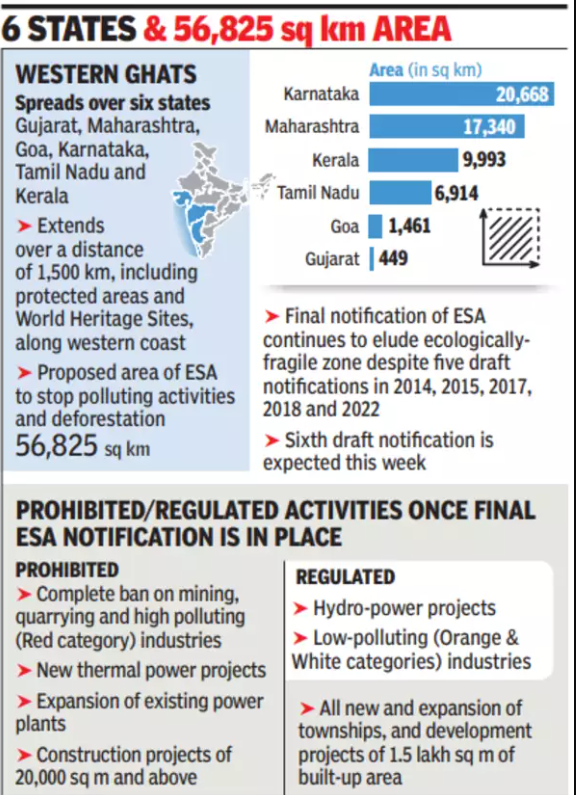
Reissue of Draft Notification
- The Union government has reissued a draft notification classifying parts of the Western Ghats in six states as Ecologically Sensitive Areas (ESAs).
- This marks the sixth time in a decade the draft has been issued.
- The reissued draft, dated July 31, 2024, will be open to public comments for 60 days.
- Despite its repeated issuance, the draft has not yet become law due to objections from the affected states.
Economic Restrictions and Local Sentiment
- The ESA designation imposes restrictions on activities such as quarrying, mining, and large infrastructure projects.
- In Kerala, there is significant opposition to the draft as it is believed to impact agricultural plantations, limit hydroelectric projects, and potentially lead to a migration crisis due to the state’s high population density.
Historical Context
- The previous draft was issued in July 2022, which proposed to include 13 villages in Wayanad as part of the ESA.
- The current draft is said to be a routine reissue following the expiry of the previous draft’s validity period (725 days), and the timing is coincidental with the recent Wayanad landslide disaster.
Committees and Recommendations
Gadgil Committee (2011)
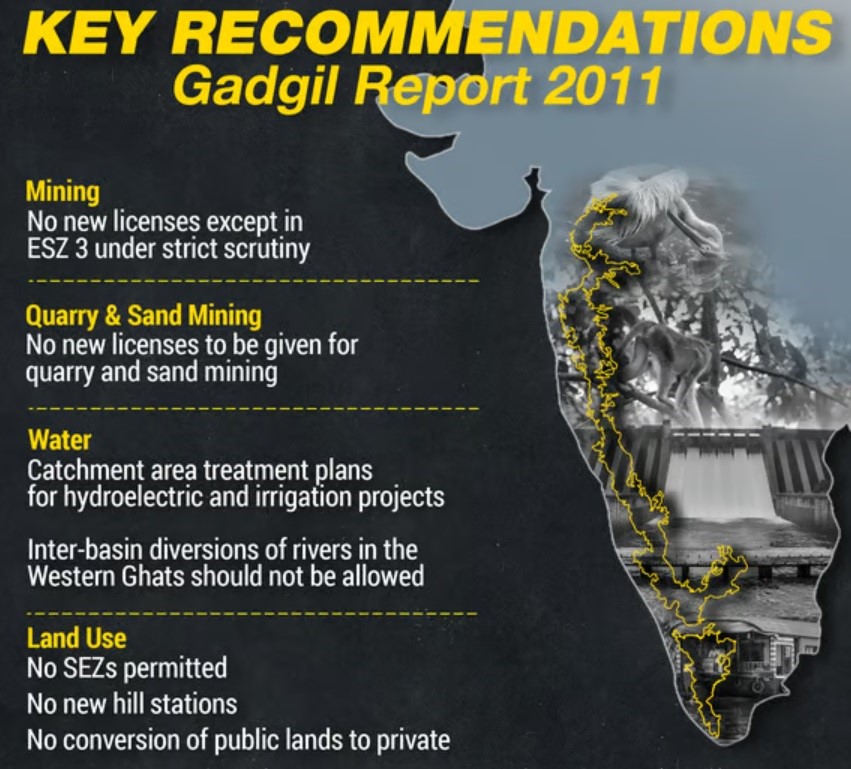
- The Gadgil Committee recommended declaring the entire Western Ghats region, covering 129,000 square kilometers, as ecologically sensitive.
- The committee proposed creating three zones: ESA 1, ESA 2, and ESA 3, with ESA 1 and ESA 2 facing the strictest restrictions on economic activity.
- States opposed these recommendations, leading to modifications.
Kasturirangan Committee (Subsequent Revisions)
- The Kasturirangan Committee re-evaluated the protection measures and reduced the area of protected regions by half.
- The committee allowed states to propose their own ESA boundaries, with Kerala being the first to do so.
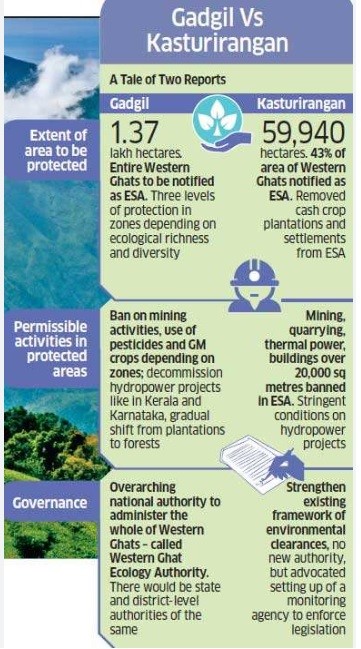
Ongoing Challenges and New Developments
Lack of Consensus
- Multiple meetings involving the Centre and the states have struggled to reach an agreement on the ESA boundaries.
- The conflicting interests of conservation versus developmental needs have been a significant hurdle.
New Committee and Report Pending
- A new committee, formed in 2022, is tasked with addressing state concerns and examining discrepancies or information gaps in the draft notification.
- This committee is also evaluating suggestions from the states and balancing conservation needs with developmental aspirations.
- The committee’s report is awaited and is expected to influence the final notification.
Conclusion
- The reissued draft notification reflects ongoing difficulties in balancing environmental protection with economic development.
- The lack of consensus among states and the challenge of integrating local needs with broader conservation goals continue to delay the finalization of the ESA designation for the Western Ghats.
| PYQ: Differentiate the causes of landslides in the Himalayan region and Western Ghats. (150 words/ 10m) (UPSC CSE (M) GS-1 2021) |
| Practice Question: Discuss the challenges and implications of establishing Ecologically Sensitive Zones (ESAs) in the Western Ghats. Suggest measures to address conflicts between environmental protection and economic interests. (250 Words /15 marks) |
PRELIMS FACTS
1. Controversy Erupts as Italian Boxer Withdraws from Olympic Match Against Algerian Opponent
(Source: Indian Express; Section: Explained; Page: 13)
| Context: |
| Italy’s Angela Carini withdrew from her Round of 16 boxing bout against Algeria’s Imane Khelif after only 46 seconds, triggering a major controversy. |
Analysis of News:
- Abuse and Accusations: Khelif faced a wave of abuse, with accusations of being a “biological man” and having an “unfair advantage.” Some wrongly identified her as a transgender woman.
- Gender Eligibility History: In 2023, Khelif and Lin Yu-ting were banned from the IBA’s World Championship for failing a “gender eligibility” test. Details remain confidential.
- IOC Involvement: The IOC, which now oversees the competition due to IBA’s derecognition, allows athletes to compete based on their passport gender. Khelif’s passport identifies her as female.
- Testosterone and Performance: Testosterone’s impact on athletic performance is debated. Some studies link it to physical advantages, but data is incomplete.
- Disorders of Sex Development (DSDs): Some women with DSDs, like Swyer syndrome, might have XY chromosomes, complicating eligibility debates.
About Swyer syndrome
- Swyer syndrome is a rare disorder characterized by the failure of the sex glands (i.e., testicles or ovaries) to develop.
- Swyer syndrome is classified as a disorder of sex development (DSD), which encompasses any disorder in which chromosomal, gonadal or anatomic sex development is abnormal.
- Girls with Swyer syndrome have an XY chromosomal makeup (as boys normally do) instead of an XX chromosomal makeup (as girls normally do).
- Despite having the XY chromosomal makeup, girls with Swyer syndrome look female and have functional female genitalia and structures including a vagina, uterus and fallopian tubes.
Ongoing Debate: The controversy highlights broader issues on fairness and inclusion in women’s sports, balancing physical advantages and genetic diversity.
2. India selects 2 crew members for Axiom-4 mission to ISS
(Source – The Hindu, International Edition – Page No. – 5)
| Context |
|
Analysis of the news:
- The Axiom-4 mission is the fourth private astronaut mission to the International Space Station (ISS).
- It is organised by Axiom Space Inc., a NASA-identified service provider.
- The mission will involve scientific research, technology demonstrations, and space outreach activities.
- This mission is part of a broader India-U.S. collaboration, following a joint ISRO-NASA initiative announced during Prime Minister Narendra Modi’s visit to the U.S. in June 2023.
- The Human Space Flight Centre (HSFC) of ISRO has signed a Space Flight Agreement with Axiom Space Inc. for this mission.
- The mission will benefit the Indian Human Space Program and strengthen ISRO-NASA cooperation.
3. Mission Vatsalya scheme deliver services for Children in Need of Care and Protection and Children in Conflict with Law
(Source – https://pib.gov.in/PressReleseDetail.aspx?PRID=2040952 )
| Context |
|
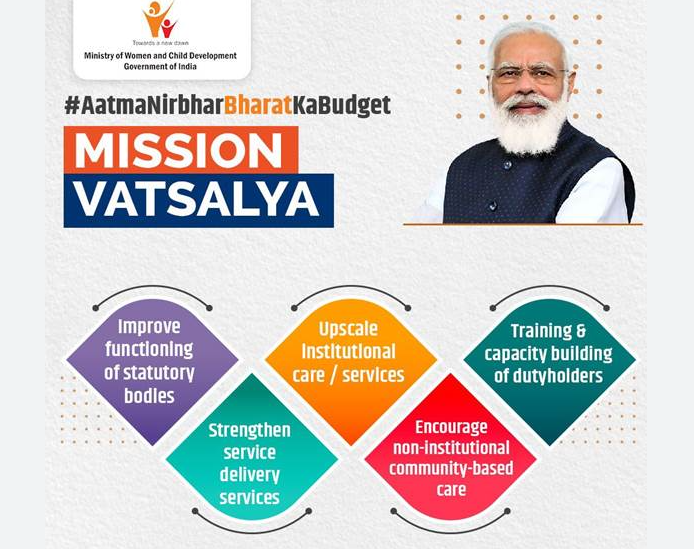
Purpose and Implementation:
- Mission Vatsalya is a Centrally Sponsored Scheme (CSS) aimed at providing services for Children in Need of Care and Protection (CNCP) and Children in Conflict with Law (CCL).
- It is implemented through States and Union Territories (UTs) across India.
- The scheme is being implemented by Ministry of Women and Child Development
Care Components:
- Institutional Care: Provided through Child Care Institutes (CCIs), including age-appropriate education, vocational training, recreation, health care, and counselling.
- Non-Institutional Care: Includes support for Adoption, Foster Care, After Care, and Sponsorship.
After Care Services:
- Provides support for children transitioning from institutional care to independent life after the age of 18 years.
Funding Pattern:
- The cost-sharing ratio is 60:40 between the Central Government and States/UTs with legislatures.
- For North-Eastern States, Himachal Pradesh, Uttarakhand, and UT of Jammu & Kashmir, the ratio is 90:10.
- In Union Territories without legislatures, the Central Government bears 100% of the cost.
Data and Responsibility:
- Data on homeless children is not centrally maintained by the Ministry.
- Execution of the Act and Scheme is primarily the responsibility of the States/UTs.

